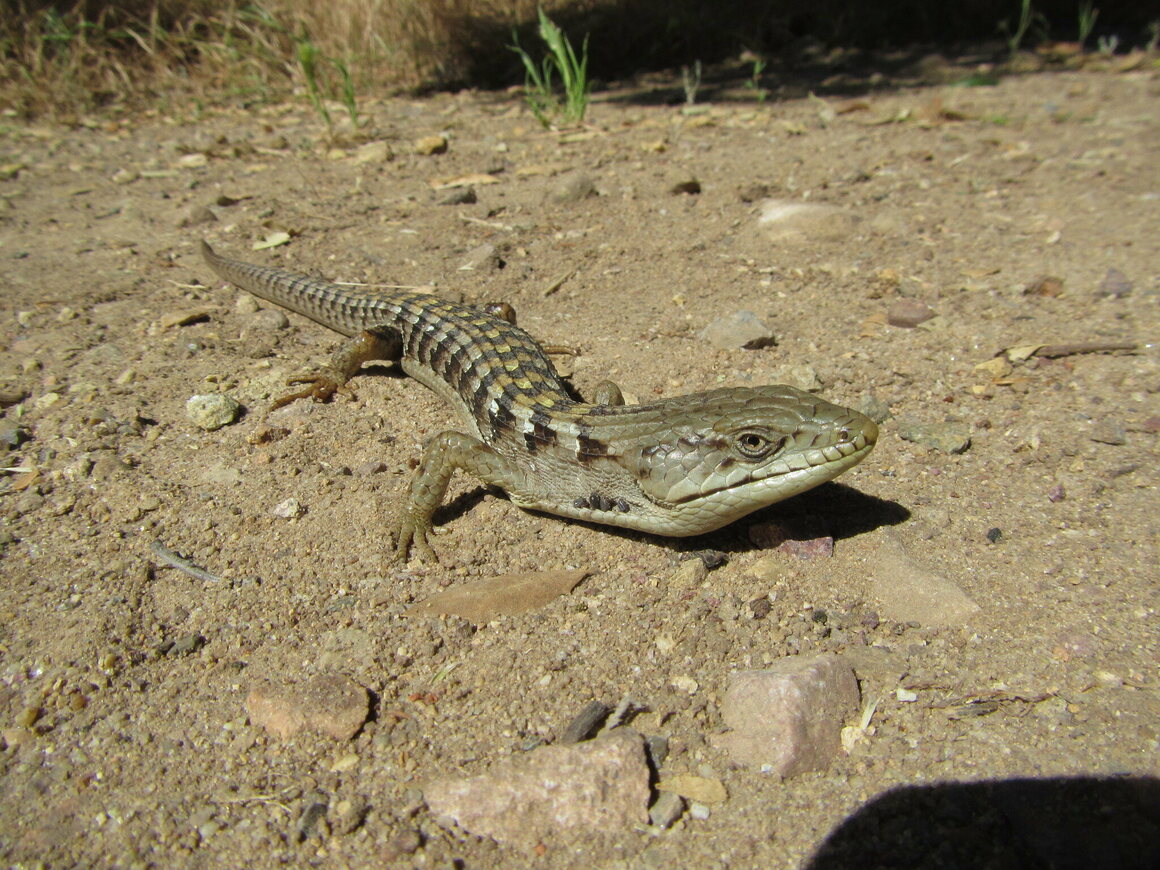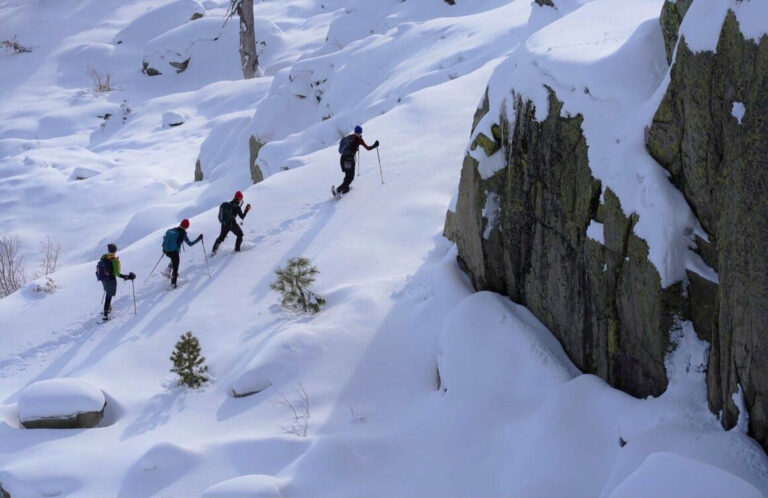California’s Elusive Urban Lizards Can’t Hide From Citizen Scientists
As a lizard-loving kid growing up in the San Francisco Bay area, Greg Pauly sometimes found himself running an accidental rehabilitation center for wayward reptiles out of his parents’ house. One neighbor wasn’t particularly sold on the squamates that lived around her yard, he recalls, but her cats, Crackers, Peepers, and Stinkers, kept intercepting them and delivering them to her. Pauly remembers that she paid him a dollar to take the unwelcome gifts off her hands, so he adopted the “three-legged, no tail” lizards as pets.
These maimed reptiles were southern alligator lizards, roughly eight inches from snout to vent, sometimes with tails more than twice as long as their bodies. They’re ubiquitous in the region, but often go unnoticed. Unlike their sun-basking relatives, Elgaria multicarinata prefer the shade. They often hang out under shrubs, beneath bits of cardboard or bags of potting soil, or in the shadows of trash cans. “Even if people have them in their yards, they’re not seeing them regularly,” says Pauly. That makes the lizards slippery subjects to study. So when Pauly—now a curator of herpetology at the Natural History Museum of Los Angeles County and codirector of the Urban Nature Research Center—and three other researchers recently set out to examine the lizards’ relationships to predators and parasites in urban areas, they had to find a way to collect sightings without spending the rest of their lives poking around the shadowy crannies of California’s yards.
Sending field crews out in search of them would be spectacularly inefficient. “We’d have to go door to door and say, ‘Can I search for lizards in your backyard?’” Pauly says. “Every 10 steps, if I’m doing a survey, I’d have to get permission from a new landowner.” Even then, researchers might work all day with little to show for it. “In the peak season of activity, between April and June, if you take someone like me who has been studying lizards their whole life and send me to a dilapidated building in a grassland area, where there are lots of places to hide, maybe I could get seven, eight, 10 in a day,” Pauly says. “In an urban area, there would be many days when I would only observe one or two.”
Instead, the team relied on the iNaturalist app, where anyone can log observations of living things. Pauly estimates that team member Riley Williams, of the Urban Nature Research Center, spent 40 or 50 hours collating observations submitted between October 2015 and September 2017. The researchers zeroed in on ones with photos, location information, date, and a taxonomic identification vetted by other people on the app—observations that the app designates as “research grade.” The scientists wound up with 723 observations that could offer insights into predation (by way of lizards missing portions of their tails) and 157 that touched on parasitism (in the form of ticks clustered around the lizards’ ears).

The images suggest that lizards in urban areas are likely to be missing a tail. Southern alligator lizards’ tails cleave off, and the part that separates from the body keeps wiggling around in a bid to distract predators. The wound on the body heals quickly, and a new tail soon starts to grow—though “it’s not a perfect replacement,” says Pauly, senior author of the team’s new paper in the journal Scientific Reports. Instead of articulated bone, the new tail has cartilage, which is stiffer in use and can stymie the lizards’ efforts to climb. The energy required to regrow a maimed tail also affects the lizards’ lifestyle, Pauly says. Recently maimed males might lose their territory, or see their dominion shrink, while females may skip a breeding season or produce fewer offspring. (“It has very serious life history consequences,” Pauly says. “But not as serious as dying.”) The adults living in urban areas had a 75 to 80 percent likelihood of having lost their tails, the authors write, compared to 55 to 60 percent for their rural counterparts. The urban lizards possibly lost theirs through tussling with cats, cars, bikes, or even the wheeled rubbish bins they hide beneath.
While the risk of predation increases in urban settings, the opposite happens for parasites. Photos of ticks clustered around the lizards’ ears reveal that the parasites are far less common among lizards living near streets, parking lots, and other such surfaces than they are for populations living farther from landscapes humans have paved and manicured. The probability of being a tick’s meal was just 2 percent in areas with 80 percent impervious surfaces, the authors write. In areas that are more natural, that probability leaped to 20 percent. The choice to study ticks was partly a practical one: Other parasites, such as mites, burrow between the scales and can only be spotted under a microscope, and parasitic worms are deep inside the creature’s body. But other research teams have found that the lizards also play a role in curbing Lyme disease, since the reptiles’ immune systems fight the bacteria, carried by ticks, that causes Lyme.
“Most people would assume that when an area becomes urbanized, it must automatically be bad for every organism that’s not a human being,” says the paper’s lead author, Breanna Putman, an assistant professor at California State University, San Bernardino, and a research associate at the Natural History Museum of Los Angeles County. “It can actually be a benefit, because the parasite load can be a lot lower.” Though the researchers looked at this one lizard, “ticks rely on multiple hosts,” Putman says, “so you can imagine this probably translates to more species.”

Urbanities can easily make the lives of these lizards a little easier. “Recognize that you’re neighbors,” Putman says. Friendly gestures might include planting native plants (which the reptiles recognize as both shelter and habitat for their preferred snacks, such as snails), and arranging logs or rocks for them to hide under. It also helps to keep cats indoors and be careful when hauling outdoor objects, to avoid cleaving a tail.
Pauly hopes that anyone with a smartphone will continue uploading photos of the wildlife they encounter—ideally, as many images as they can manage without stressing the animal. “You never know what some future scientist is going to find interesting,” he says. A trove of well-annotated images from all over the world could be useful for projects that haven’t been imagined yet—and might only be possible with a massive, collaborative digital archive of photos and data. “Sometimes I daydream about what it would be like to be a scientist 100 years from now,” Pauly says. “Think of all the fun questions we could ask then.”





